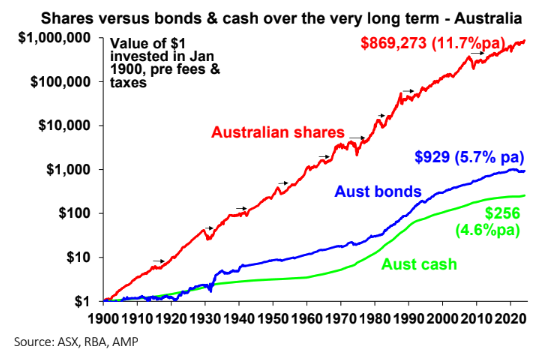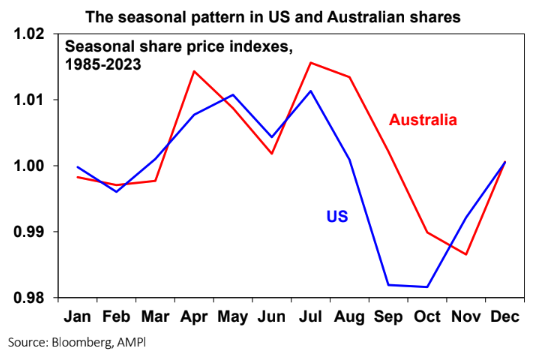21 great investment quotes from Warren Buffett, Benjamin Graham, and others
The aim of investing
“How many millionaires do you know who have become wealthy by investing in savings accounts?” Robert G Allen, investment author

“The aim is to make money, not to be right.” Ned Davis, investment analyst and co-founder of the Ned Davis Research Group.
The investment process
Unless you want to put a lot of time into trading, it’s advisable to only invest in assets you would be comfortable holding for the long term. This is less risky than constantly tinkering in response to predictions of short-term changes in value and all the noise around investment markets.
Investing is not the same as gambling and requires a much longer time frame to pay off.
Having a disciplined investment process and consistently applying it is critical for investors if they wish to actively manage their investments successfully in the short term.
The key insight here is that trying to beat the market by stock picking can be hard and so if you want to grow wealth over time the key is to get a broad exposure to the market and let compound interest do its job.
The investment market
Rules of logic often don’t apply in investment markets. The well-known advocate of value investing, Benjamin Graham, coined the term “Mr Market” (in 1949) as a metaphor to explain the share market. Sometimes, Mr Market sets sensible share prices based on economic and business developments. At other times he is emotionally unstable, swinging from euphoria to pessimism. But not only is Mr Market highly unstable, he is also highly seductive – sucking investors in during the good times with dreams of riches and spitting them out during the bad times when all hope seems lost. Investors need to recognise this.
A key is to respect the market and recognise that it can be fickle rather than try and take big bets that can send you bust if you get the timing wrong. For example, by heavily selling shares short if you think a crash is about to happen or gearing in too heavily via margin debt when the market is strong. Such approaches can often undo investors and send them bust as they are too dependent on accurately timing the market.
Investment cycles and contrarian investing
This is one of the best descriptions of how the investment cycle unfolds. It follows that the point of maximum opportunity in terms of prospective return is around the time most investors are pessimistic and bearish and the point of maximum risk is when most investors are euphoric and bullish, but unfortunately many don’t realise this because it involves going against the crowd.
History tells us that there are good times and bad and assuming that either will persist indefinitely is a big mistake. Whenever you hear talk of “new paradigms”, “new eras”, “new normals” or “new whatever” it’s usually getting time for the cycle to go in the other direction.
No two cycles are the same, but they do have common elements which make them rhyme. In upswings, investment markets are pushed to the point where the relevant asset has become overvalued, over-loved (in that everyone is on board) and over-bought and vice versa in downturns. Recognising these common elements is necessary if you are to get a handle on cyclical swings in investment markets.
This doesn’t apply to everything (e.g. if it is obviously sunny outside according to the usual definition, then it is!), but investing can be perverse. When everyone is saying “it’s obvious that the recession will continue” or “It’s impossible to see a recession as things are obviously good” then maybe the crowd is already on board and the cycle will soon turn.
This is another great quote on contrarian investing that follows on from those above.
Shares have long been observed to have a seasonal pattern that sees strength from November through to May and then relative weakness through to around October. This can be seen in seasonal indexes for US and Australian shares in the next chart. (St Leger’s Day in terms of the UK horse race on the second Saturday in September may be a bit early, but not to worry!)

Investor pessimism
This is a pre-requisite. If you don’t believe the bank will look after your term deposits, that most borrowers will pay back their debts, that most companies will see rising profits over time, that properties will earn rents etc then there is no point investing. This is flippant but true – to be a successful investor you need a favourable view of the future.
Preserving capital is important, but this can be taken too far and often is in the aftermath of bad times with the result that investors end up so focused on trying to avoid capital losses in share markets that they miss the returns they offer.
It invariably seems that higher regard is had for pessimists predicting disaster than for optimists seeing better times. As the American economist JK Galbraith once observed, “We all agree that pessimism is a mark of a superior intellect.” And we all know that bad news sells.
There may be a neurological reason for this as the human brain evolved in the Pleistocene era when the key was to dodge woolly mammoths and sabre tooth tigers, so it has been hard-wired to be always on guard and so naturally attracted to doomsayers. But for investors, giving too much attention to pessimists doesn’t pay over the long term.
Risk
Many like to measure risk by looking at measures of volatility, but the riskiest time in markets is invariably when the common view is that there is no risk for it’s often around this point that everyone who wants to invest has already done so leaving the market vulnerable to bad news.
Debt
Always make sure that you don’t take on so much debt that it may force you to sell all your investments and potentially send you bust, just at the time you should be buying.
The right mindset for an investor
This may sound perverse as surely it is events that drive investment markets down and destroy value. But the trouble is that events and bear markets are normal. Rather what causes the greatest damage is our reaction to events – selling after markets have already plunged and only buying back in after euphoria has returned.
Smart investors have an awareness of their psychological weaknesses and their risk tolerance and seem to manage them.
If you can’t handle volatility associated with investment markets, then either they are not for you or you should just take a long-term approach and leave it to someone else to manage and advise on the investment of your funds.

